The top activities in Oslo highlight both the natural and historical splendor of the city. Norway’s capital is located on a southern headland in the Oslofjord, where gorgeous waterfronts and skiing hills meet. Ancient Viking artifacts can be found scattered along the water’s edge, especially on the peninsula of Bygdy. The majority of Oslo’s fascinating museums are located here.
In terms of size, Oslo is one of the largest capitals in the world. With so many places that are designed with pedestrians in mind, the city center is a delight to stroll through. Oslo is renowned for its theater and has a vibrant cultural scene with lots of entertaining things to do.
1. Explore Vigeland Sculpture Park

One of Norway’s most well-known tourist destinations is the magnificent Vigeland Sculpture Park (Vigelandsanlegget), which is located inside Oslo’s renowned Frogner Park (Frognerparken). Gustav Vigeland created 650 dynamic sculptures in bronze, granite, and wrought iron for this one-of-a-kind sculpture park, which is open all year long.
Most of the sculptures are arranged in five thematic clusters along an 853-meter-long axis. The 16-meter-high Monolith, which is made up of 121 interconnected human bodies, is visible beyond the fountain group, which is the oldest and shows the cycle of human life.
The rest of Frogner Park, which offers a lot of open places for picnics, recreational amenities, a sizable rose garden, and the biggest playground in the country, is worth spending some time exploring for tourists. Along with the Vigeland Museum (Vigelandmuseet), which is close to the park, you can also find the Oslo City Museum (Oslo Bymuseum) here.
Address: N-0268 Oslo, Nobels Gate 32
2. See the Museums in Akershus Fortress

The magnificent Akershus Fortress (Akershus Festning), erected by Hkon V at the end of the 13th century, rises above the Oslofjord on the Akernes promontory. Here, you might easily spend the most of a day sightseeing.
Before viewing the charming church with Hkon VII’s (1872–1957) grave and the ruins of the ancient medieval castle, take your time to stroll the grounds and ramparts with their beautiful harbor views. The Norwegian Resistance Museum, sometimes referred to as the Norwegian Home Front Museum, is likewise situated on the premises (Norges Hjemmefrontmuseum). It will take you a few hours to study about the German occupation from 1940 to 1945.
If you still have any strength, go to Oslo’s former Arsenal to visit the Norwegian Armed Forces Museum (Forsvarsmuseet). The history of the Norwegian forces and Norway’s defense over the ages are depicted in this intriguing museum’s numerous weapon displays and exhibitions.
Address: Akershus Festning, Oslo, 0015
3. Norsk Folkemuseum (Folk Museum of Norway)

The Norsk Folkemuseum, a great outdoor museum with a variety of ongoing displays spanning 500 years of Norwegian folk culture, is situated in Olslo’s Bygdy neighborhood. The museum’s structures are broken up into different sections that highlight various eras and environments. One of the biggest regions is the rustic “Countryside” area, which includes replicas of goahti, a characteristic Sami building, as well as typical farmhouses from various historical eras.
The museum also features a “Old Town” that is primarily made up of ancient structures that were moved from Christiania, a village from the early 17th century. The museum also provides daily activities for people of all ages, such as practical folk craft projects, and costumed interpreters can be seen all throughout the grounds going about their daily lives while living in a bubble of history. While you’re here, try some lefse, a typical Danish pastry with cinnamon and sugar.
Oslo, Norway address: Museumsveien 10, Bygdy 0287
4. Get Ready for the “New” National Museum
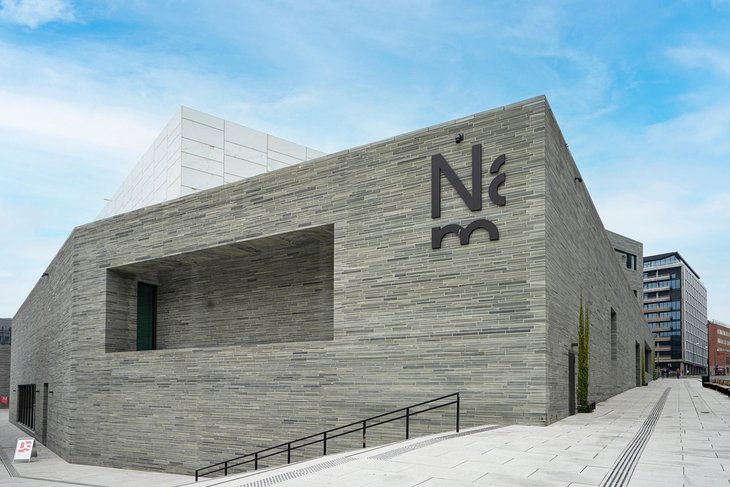
Oslo’s new National Museum, which is scheduled to open in June 2022, will include collections from the National Gallery and the National Museum – Architecture in addition to additional holdings of modern and contemporary art and design. It will hold Norway’s largest art collection, which includes pieces by Norwegian painters from the 19th century to the present, including J. C. Dahl and many pieces by Edvard Munch, including his most well-known piece, The Scream. This museum will be the largest of its kind in Scandinavia.
In the future, the new National Museum will also hold the National Gallery’s collections as well as those from the Museum of Contemporary Art, which is now closed, and the Museum of Decorative Arts and Design. Visitors should check the museum website before making travel plans since some exhibits might not be accessible during the transfer.
Address: Universitetsgata 13, Oslo
5. Visit the Munch Museum
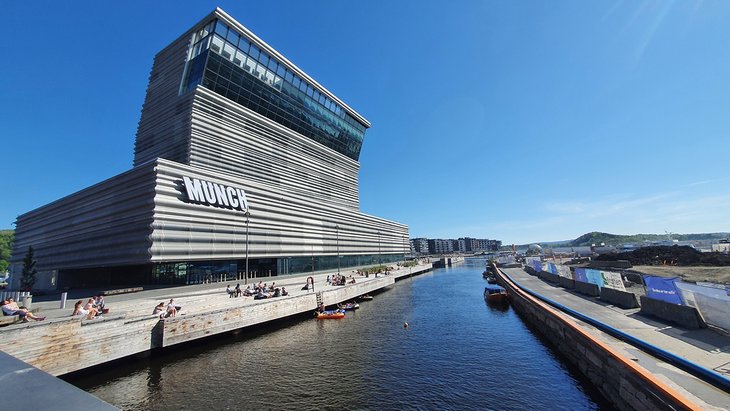
The Edvard Munch Museum (Munch-museet), which is devoted to the life and work of Norway’s greatest painter (1863–1944), houses a sizable collection of the renowned artist’s works, including paintings, sculptures, graphic art, drawings, and watercolors.
The museum hosts special exhibits related to various facets of Munch’s work through film screenings, performances, guided tours, and talks. It houses about 28,000 works of art in addition to his personal belongings and instruments, including his private library.
Please be aware that the Munch Museum will soon move to a new location close to the city’s opera house. While the transition is projected to be complete by the end of 2021, make sure to check first for information on their official website, below.
Address: Toyengata 53, 0578 Oslo
6. Tour the Royal Palace
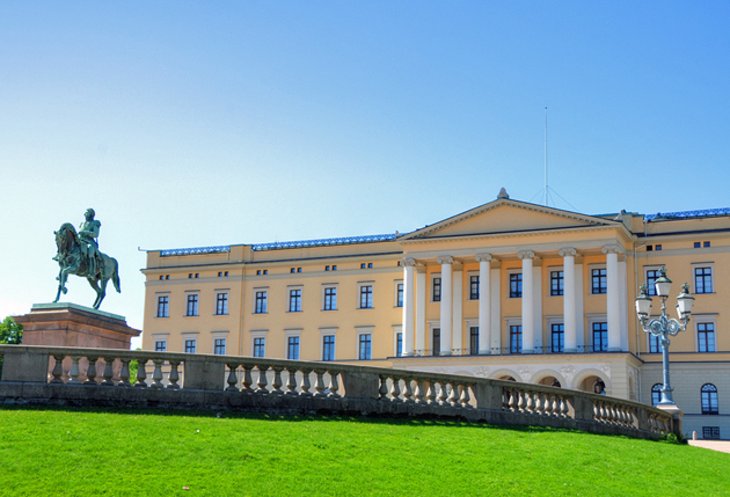
The 1825-built Norwegian Royal Palace (Slottet), which dominates the urban landscape. Only during the summer are public tours of the 173-room structure available. At Slottet, English-language guides are offered four times per day.
Address: Slottsplassen 1, 0010 Oslo
7. Historical Museum at the Museum of Cultural History
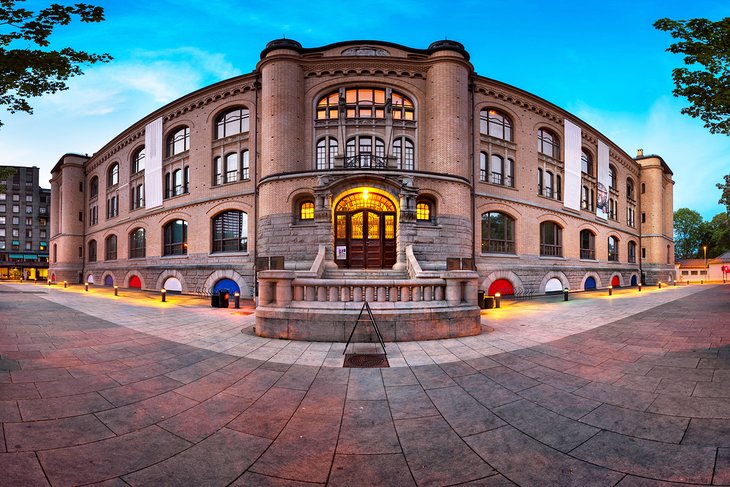
In Norway, the Museum of Cultural History is home to the country’s greatest collection of Egyptian artifacts. A surviving Viking helmet is one of the unique pieces in the Viking Age Exhibition. Other sections of the museum concentrate on looking at individuals, such as the history of gold currency and indigenous peoples.
Address: Frederiks gate 2, 0164 Oslo
8. Explore Oslofjord by Boat
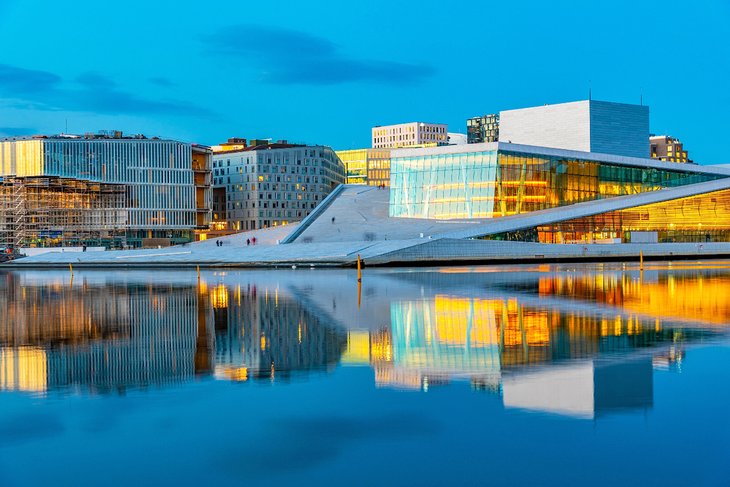
Oslo is connected to the North Sea via the Olsofjord. From fully escorted tourist boats to more rural options with sailboats, there are many different cruise options available. The majority of these are located at or close to the City Hall piers.
9. The Fram Museum
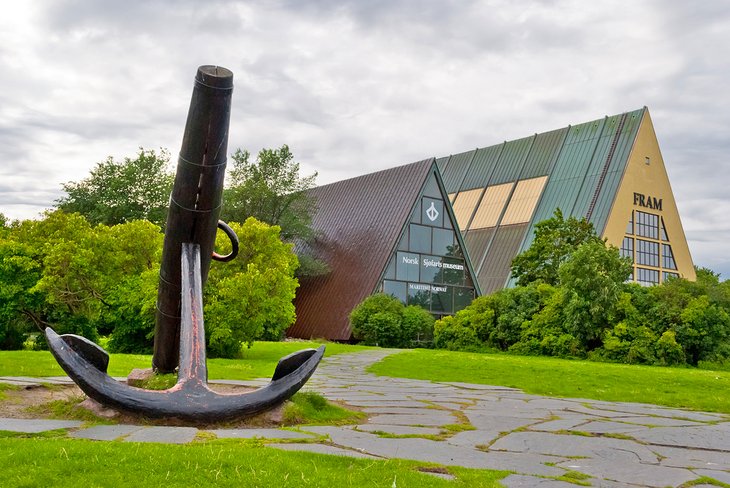
Anyone interested in the exploration of the Arctic must pay a visit to the Fram Museum. The Fram, the first ship to successfully cross the Arctic Circle, and Gja, the only ship to travel the Northwest Passage, are the highlights of the exhibition.
Address: Bygdoynesveien 39, 0286 Oslo
10. Norwegian Maritime Museum
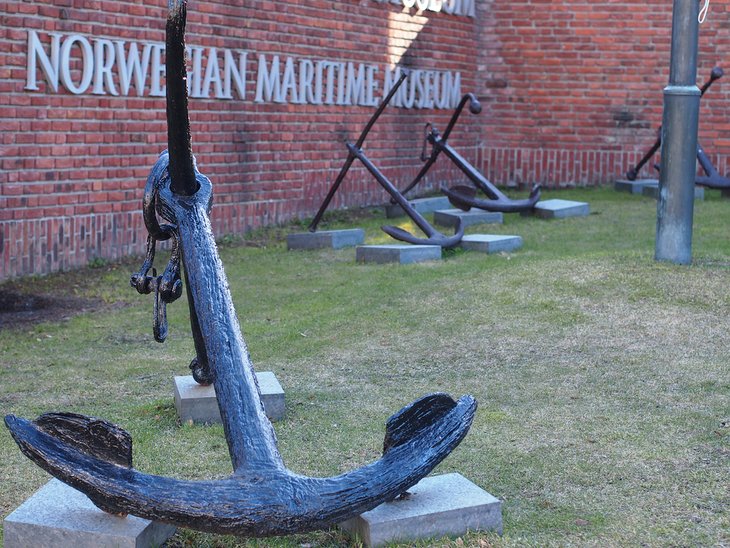
One of the top maritime museums in the world is the Norwegian Maritime Museum (Norsk Maritimt Museum). From the Viking era to the present, an extraordinary collection of models, paintings, and models portrays the narrative of Norwegian seafarers.
Address: Bygdoynesveien 37, Oslo
11. Kon-Tiki Museum

The famed Norwegian’s other warships are also on exhibit. There are English-language guided tours available, and you may see the Oscar-winning documentary on him.
Address: Bygdoynesveien 36, 0286 Oslo
12. Holmenkollen Ski Jump and Museum
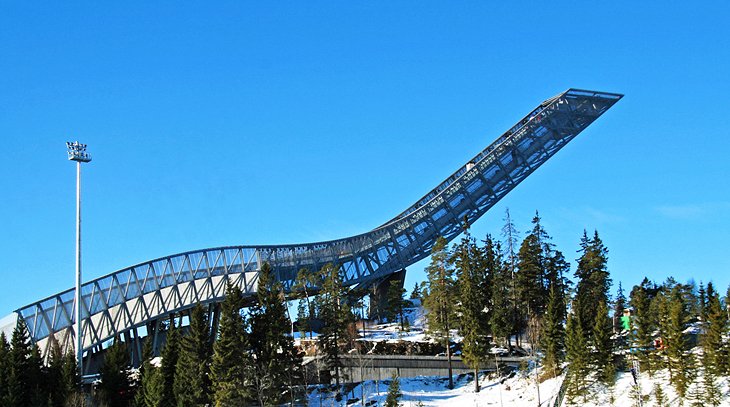
There are skis from the eighth, tenth, and twelveth centuries on display, with the earliest ski dating to AD 600. The Ski Jump and its Jump Tower Observation Deck, which offers fantastic views of Oslo, the capital of Norway, are included in guided tours.
Address: Kongeveien 5, 0787 Oslo
13. Oslo Cathedral
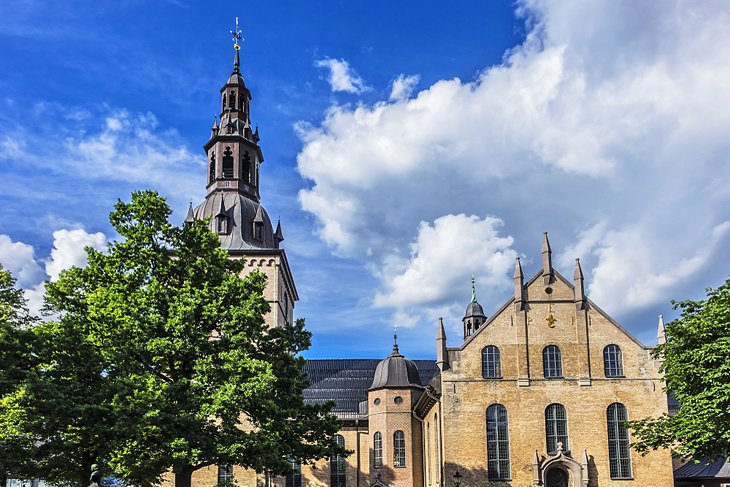
In 1697, the Oslo Domkirke (Oslo domkirke) was dedicated. In 1850, the tower was reconstructed, and after World War II, the interior was updated. Emanuel Vigeland renovated the Baroque pulpit and altar in the 1970s.
Address: Karl Johansgt. 11, 0154 Oslo
14. City Hall (Radhuset)
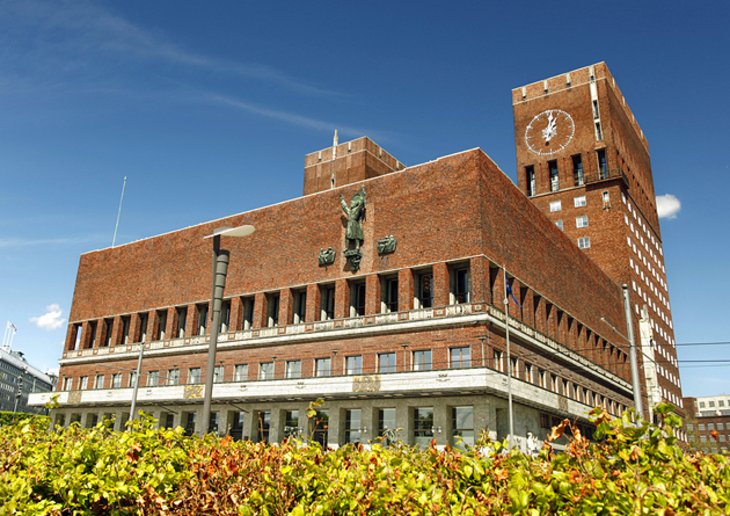
Arnstein Arneberg and Magnus Poulson created Oslo’s City Hall (Rdhuset). The 38 bells that can be heard throughout the harbor area are housed in one of the towers. Rich frescoes by Henrik Srensen, Per Krohg, Edvard Munch, and other well-known artists may be found inside.
Address: Radhuset, 0037 Oslo
15. Aker Brygge
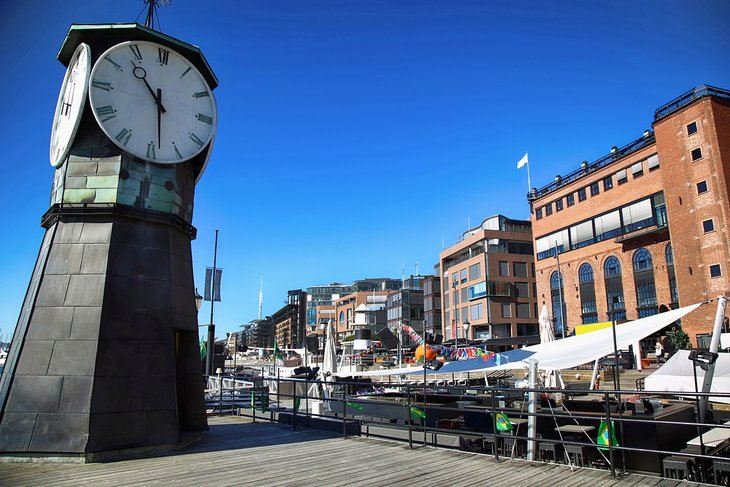
The Aker Brygge neighborhood of Oslo is the center of the city. This place is a must-see for both locals and tourists because of the promenade along the sea, the good dining options, and the year-round patio bars. Visit the Astrup Fearnley Museum of Modern Art.
Address: Bryggegata 9, 0120 Oslo
16. Natural History Museum & Botanical Gardens
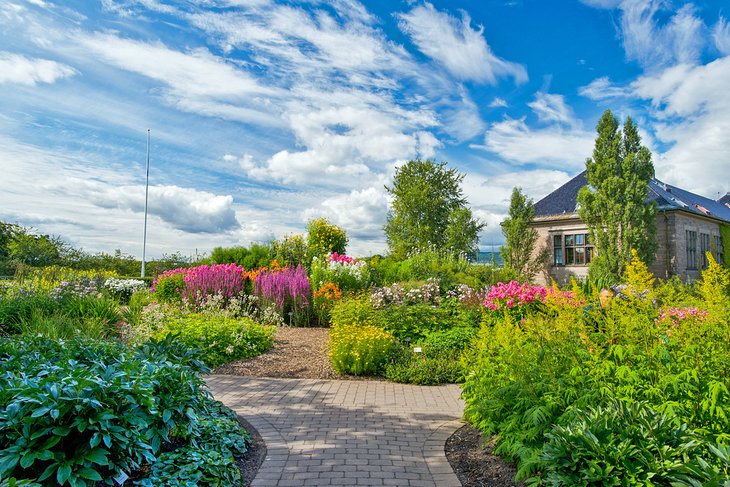
The largest natural history collection in Norway is housed in the Natural History Museum (Naturhistorisk museum). Minerals, precious metals, meteorites, and dinosaur skeletons are all kept in the Geological Museum. The Botanical Gardens, with its 7,500 unique plant species, is the best, though.
Address: Sars gate 1, 0562 Oslo
17. Oslo Opera House and Annual Music Festivals
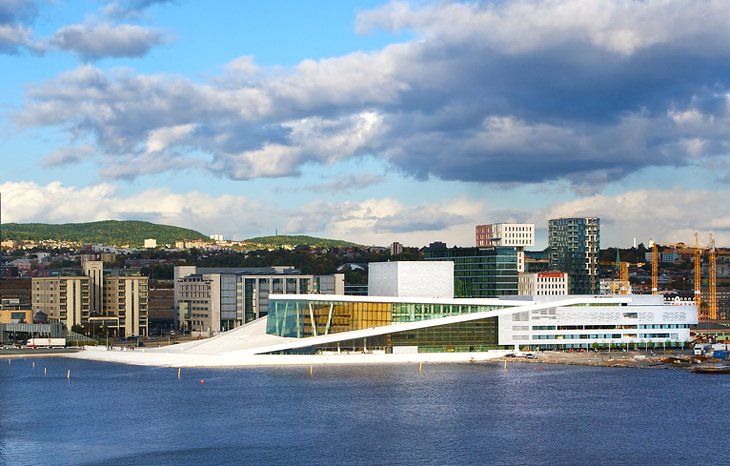
The Norwegian National Opera and Ballet, as well as the National Opera House, are located in Oslo. The Opera House, which is covered in Italian marble and white granite, is the biggest cultural structure to be built in Norway since the Nidaros Cathedral in Trondheim was finished in the fourteenth century.
Address: Kirsten Flagstads Plass 1, 0150 Oslo
Where to Stay in Oslo for Sightseeing
The best place to stay is in the city’s center, ideally close to Karl Johans gate, the main thoroughfare. Many of the most well-known hotels in the city are only a short stroll from many of the city’s major attractions.
Luxury Hotels:
- The eco-friendly Thon Hotel Rosenkrantz Oslo features bright, contemporary decor and offers reasonable rates that include breakfast. It is located close to some of Oslo’s best museums and galleries, the central railway, and the Royal Palace.
- The family-run Hotel Continental Oslo, which is close to Aker Brygge, the National Gallery, and the Royal Palace, is decorated with distinctive artwork and sumptuous furnishings. Every room is different.
- In a convenient position, close to Central Station and the opera house, is the pet-friendly Clarion Collection Hotel Bastion. An organic breakfast and a light buffet dinner are included in the price.
Mid-Range Hotels:
- With its pleasant, modern rooms and complimentary breakfast, the Clarion Collection Hotel Folketeateret in the city’s center is at the top of the mid-range hotel market. It is close to the National Gallery and central station.
- The eco-friendly Oslo Guldsmeden is located 100 meters from the Royal Palace and close to Aker Brygge. It stands out for its earthy, textured décor. Breakfast is served for a fee and features ingredients from nearby farmers.
- The Thon Hotel Munch, located in the heart of the city on a quiet side street, offers an organic breakfast and rooms that are brightly colored with dramatic white accents.
Budget Hotels:
- The Cochs Pension is one of the few inexpensive lodging alternatives in central Oslo. The hotel is conveniently located close to the Royal Palace and offers rooms with refrigerators and some with kitchenettes.
- Another convenient choice is the Smarthotel Oslo. Although the hotel is close to Oslo’s main commercial district, the accommodations are tiny.
- Oslo Hostel Haraldsheim, which is about a 20-minute tram ride from the city center, is very reasonably priced. Parking and breakfast are included in rates.
Tips and Tours: How to Make the Most of Your Visit to Oslo
Hopping around Town:
- sightseeing in the city. The educated guide provides on-board commentary as part of the Oslo Hop-On Hop-Off Tour. 18 significant attractions, including the Viking Ship Museum and Vigeland Sculpture Park, are accessible with a 24-hour pass. Travel by coach or in person to the biggest tourist attractions in Oslo.
All-Access Pass:
- The Visit Oslo Pass is a great method to make sure you don’t go over budget on transportation and admission prices. The pass provides the holder to great savings at extra attractions in addition to being good for entrance to 36 attractions. Restaurants, tourist excursions, and unrestricted use of public transportation are also included in zone 2.
The Best of Oslo in One Day:
- The Holmenkollen Ski Jump and Vigeland Park are both included in the Grand City Tour’s seven-hour excursion. It includes excursions to a number of renowned museums, including the Bygdoy Peninsula ship museums.

Leave a Reply
You must be logged in to post a comment.